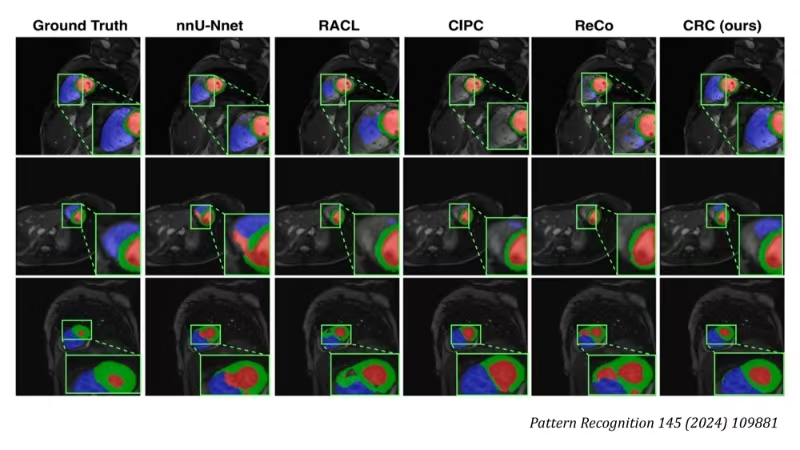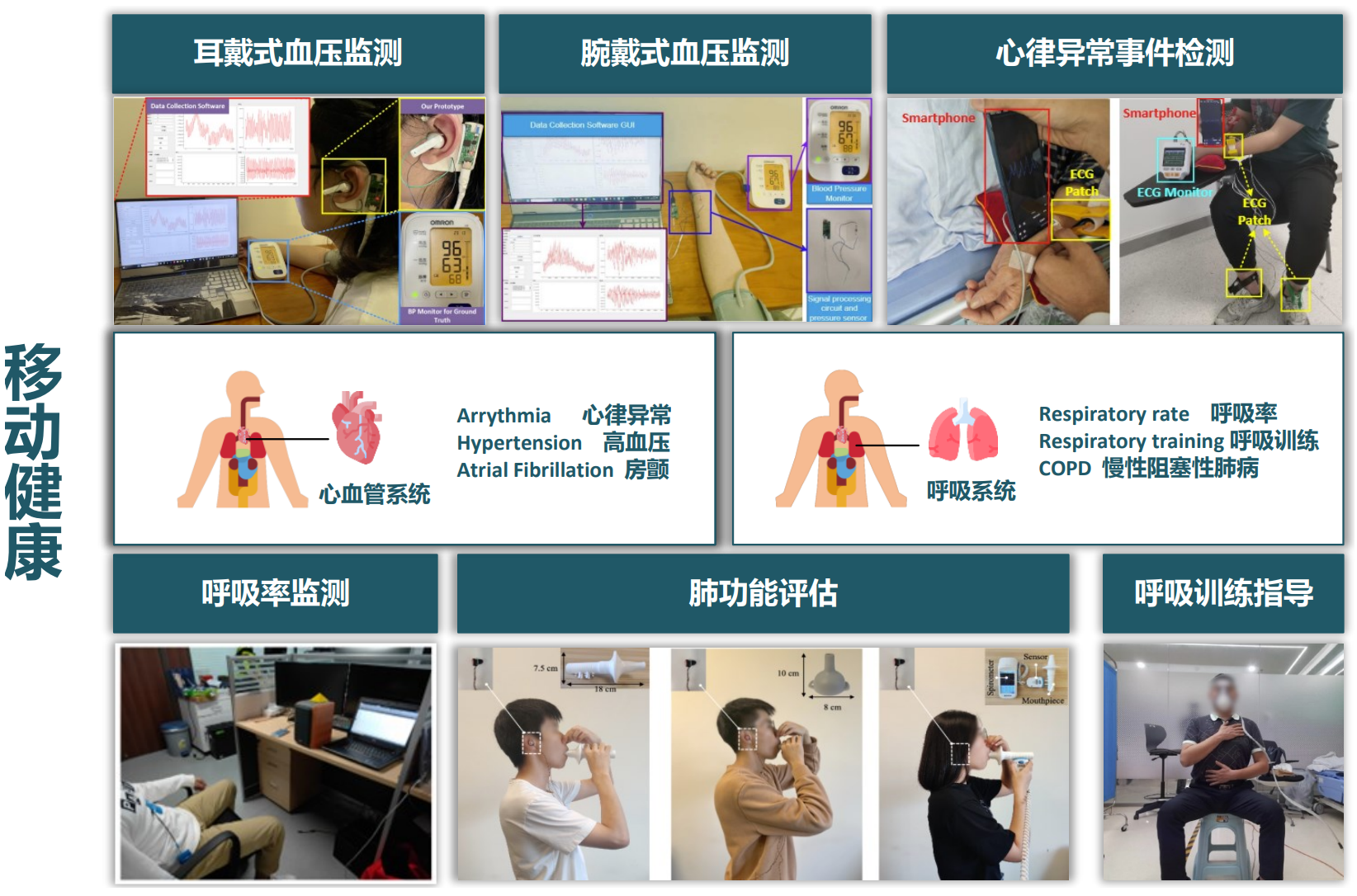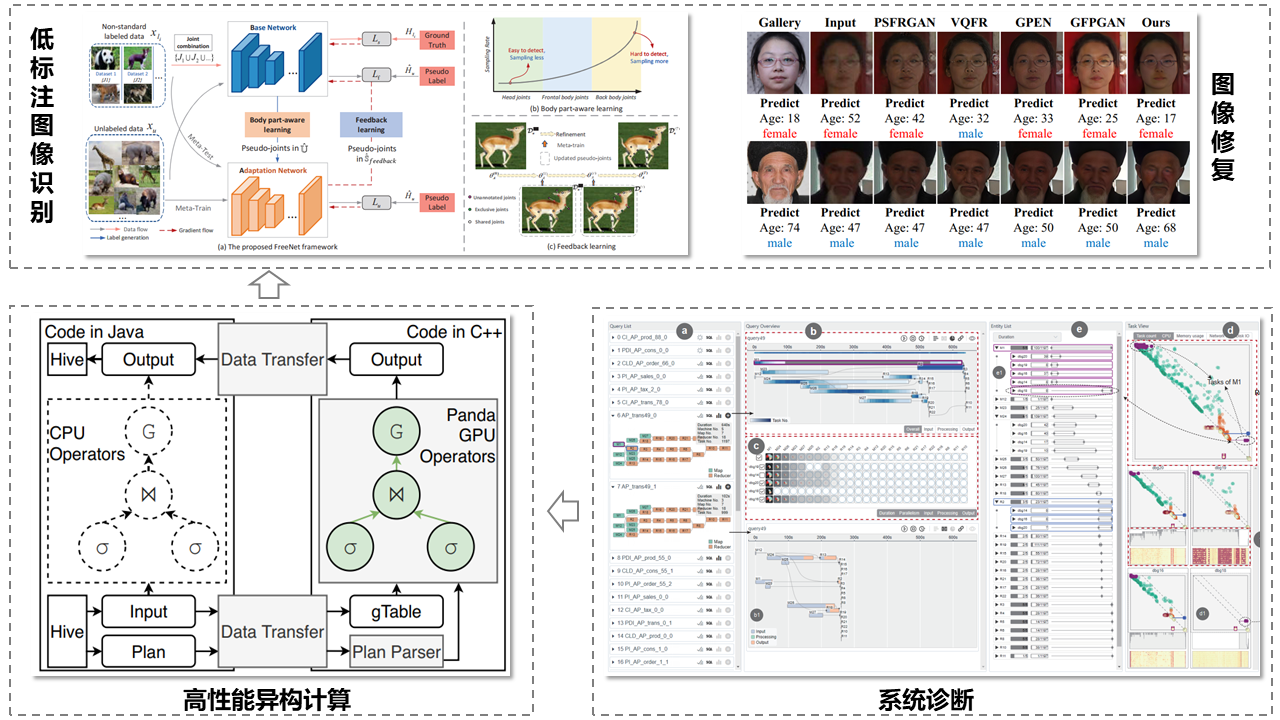Outcome1: A Trusted Assisted Diagnosis System for Multiple Diseases
Abstract: Adaptive Enhancement of Medical Images and Autonomous Optimization of Models
Medical image degradation is common in clinical scenarios, and image enhancement is needed to improve imaging effects and clinical judgment. However, the noise of medical images is variable, and the existing image enhancement algorithms are mainly based on pre-developed static models, which do not have the ability to continue to optimize after deployment, making it difficult to continue to provide effective enhancement results and unable to make full use of clinical data information. To this end, the iMED team has carried out a series of research work on adaptive image enhancement and autonomous model optimization, including noise-adaptive image enhancement (TMI 2022), structural consistency-guided generalizable image enhancement (MIA 2023), and passive-domain-adaptive autonomous model optimization (TMI 2024), which enables the image enhancement model to be autonomously optimized with the test data in clinical applications. optimization, and learning-by-doing to continuously improve the image enhancement effect.

Outcome2:A Highly Trustworthy and Intelligent Cancer Image Data Analysis System
Abstract: Segmentation, Synthesis and Feature Learning of Multimodal Medical Images
Multimodal medical image analysis is crucial in modern healthcare, where different modalities provide complementary information to support accurate diagnosis, treatment planning and postoperative monitoring. Data scarcity, missing modalities, inter-domain differences, and category confusion have limited the application of AI technology, and the CVIP research group has proposed a series of innovative approaches in this direction, including a dynamic contrast learning segmentation framework (Pattern Recognition, 2024), task similarity consistent semi-supervised segmentation method (TMI, 2023), domain-adaptive unsupervised image synthesis method (MICCAI, 2024), and a domain-adaptive unsupervised image synthesis method (MICCAI, 2023). (MICCAI, 2022), and gradient-guided modal decoupling strategy (AAAI, 2024), which effectively facilitate robust and robust multimodal medical image analysis.

Outcome3:An Intelligent and Trustworthy Remote Health Data Acquisition Monitoring and Analysis System for Signs and Symptoms
Abstract: A smart remote health data trusted monitoring system for chronic disease signs and other health data
1, Music-based respiratory rate detection system: recent studies have shown that it is possible to utilize acoustic signals for high-precision, low-energy respiratory monitoring. However, existing technologies require speakers to emit ultrasonic signals, which, although inaudible to adults, may affect children, pets, and even plants. In this project, we propose to utilize everyday acoustic signals (e.g., music or radio audio) to detect breathing instead of ultrasound. We designed a breath detection system that derives the respiration frequency by estimating the channel impulse response (CIR). The inter-symbol interference (ISI) of the signal and its minimization strategies are investigated, and techniques to address multipath effects and sampling frequency offsets between the speaker and microphone are proposed. Through experimental validation, the results show that the system achieves high accuracy in respiration detection with an average error of less than 0.5 BPM when using different audio signals.
2、 Headphone-type whole-lung spirometry system for lung function assessment
Spirometry is the gold standard for assessing lung function, but mobile devices do not provide flow-volume (F-V) curves and lack inspiratory measurements. This project introduces the EarSpiro headset-based solution that generates F-V curves by interpreting airflow sounds, including expiratory and inspiratory measurements. EarSpiro utilizes convolutional neural networks (CNNs) and recurrent neural networks (RNNs) to capture the complex relationship between airflow sounds and airflow velocities and uses a clustering-based segmentation algorithm to track weak inspiratory signals. In addition, EarSpiro combines migration learning and decoder networks to make it suitable for everyday use with only a handful of real lung function metrics. In an experiment with 60 subjects, the average error in the estimation of expiratory and inspiratory flow rates of EarSpiro was 0.20L/s and 0.42L/s, respectively, and the estimation errors of F-V curves were 0.61L/s and 0.83L/s, while the average estimation error of the four common lung function indicators was 7.3%.
3、Blood pressure monitoring system based on flexible sensor
Blood pressure monitoring is crucial for health management. Traditional sphygmomanometers use pressurization, which leads to discomfort and does not allow for continuous monitoring. Optical volumetric tracing monitors are also susceptible to light interference. To address these issues, we propose a novel wrist-worn blood pressure monitoring system. The system collects pulse wave signals from the wrist via a flexible sensor and preprocesses them to remove interference. Through feature extraction, we obtain effective features and use a personalized adaptive estimation framework combining Transformer model and fine-tuning techniques to improve the accuracy of blood pressure estimation. Through experimental validation on 36 individuals, FlexibleBP meets the AAMI criteria with estimation errors of 2.61 mmHg for systolic blood pressure and 1.37 mmHg for diastolic blood pressure, with standard deviations of 5.59 mmHg and 5.75 mmHg, respectively.This study is an important step towards the development of a more advanced and user-friendly wearable blood pressure monitoring system.
4. Atrial Fibrillation Detection System Implemented through Acoustic Sensing in Mobile Phones
Atrial fibrillation (AF) is caused by irregular electrical impulses in the atria, and early monitoring of AF is essential to prevent deterioration. Although ambulatory electrocardiogram (ECG) monitors are accurate, their high cost limits their widespread use. Existing mobile device-based AF detection systems have applicability issues. To address these issues, we propose a novel AF detection system for smartphones that utilizes speakers and microphones to capture minute cardiac activity via a multi-channel pulse wave detection method and introduces a three-stage pulse wave purification pipeline to improve signal quality. We also achieved accurate detection based on the ResNet network model. Data were collected from 23 participants via smartphones, and the experimental results show that the system performs well in AF detection with 97.9% accuracy, 96.8% precision, 97.2% recall, 98.3% specificity, and 97.0% F1 score.
5. Depth Camera-based Breathing Exercise Guidance
For patients with Chronic Obstructive Pulmonary Disease (COPD), breathing exercises are critical for enhancing lung function. Previous non-contact sensing methods have many assumptions and limitations. To this end, we propose a novel depth camera-based respiratory exercise assessment system that aims to overcome the limitations of existing methods. For the first time, the system considers breathing patterns and lung volumes as correlated measures and significantly improves the performance of breathing pattern classification through joint estimation with a multi-task learning framework. To enable calibration-free lung volume measurement, the system is designed to apply estimation to all lung volumes and improve accuracy with the help of a lightweight contour segmentation model. We collaborated with a clinical center to conduct experiments on 22 healthy subjects and 14 patients, and the results show that DeepBreath outperforms previous studies in respiratory metrics estimation accuracy and is more practically applicable.

Outcome4:A Trusted Feature Extraction Method for Pathology Data
Abstract: High Performance Computing and Image Processing under Complex Conditions
The DBGroup team focuses on the key challenges of labeled data scarcity, variable data quality, and huge computation in clinical scenarios. To address the problem of label scarcity, the team proposed an innovative image recognition scheme (ACM MM 2023) and developed an image restoration technique to cope with attribute bias (IJACA 2023), which provides a new way of thinking about recognition and restoration in complex data environments. Meanwhile, the team conducted systematic research on HPC platforms, including exploring the efficiency and reliability of heterogeneous computing architectures (SOCC 2022, SIGMOD 2023-2025, VLDB 2024), and designing visual diagnostic tools to support complex computational tasks (TVCG 2023, VLDB 2023, TKDE 2024), which achieved the precise location and optimization of system bottlenecks.






